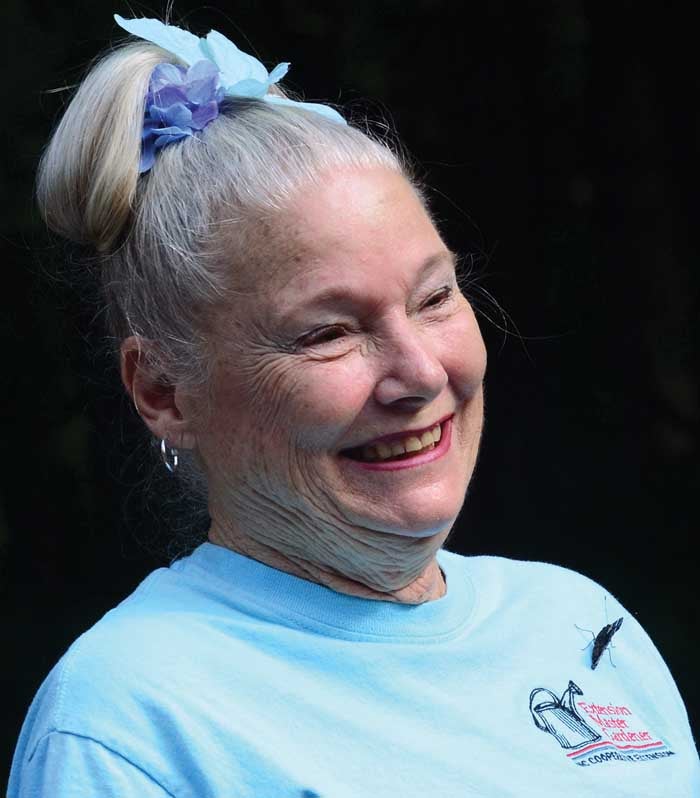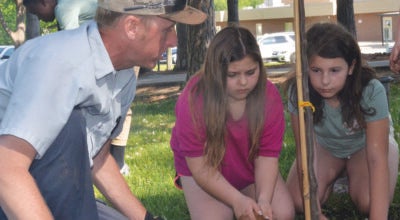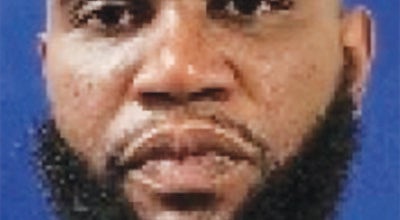Butterflies are pollinators, too
Published 9:53 am Thursday, August 31, 2017

- A butterfly lands on Caro Dose's shirt during a Monarch Way Station program.
Butterflies are beautiful, colorful creatures that most folks love to watch flitter around in the summertime.
They’re also pollinators. And with the decline in honeybees, it’s important to protect as many pollinators as possible.
Chuck and Chantal King got into the butterfly craze big time last year, when they made a portion of their front yard in the Cornatzer community an official Monarch Butterfly Way Station.
It started with an article in the newspaper that he saw last year. It brought back memories of chasing butterflies with a net with his brother as a child.
“Now, I wouldn’t dare try to collect one,” he said. Now, he provides them with everything they need to survive. The couple hosted a group of Davie County Master Gardeners last week, giving them a peek at their garden and offering tips on attracting butterflies.
They researched the plants Monarchs need, and started planting, including milkweed, the only plant a Monarch butterfly will lay eggs on. “It’s all the caterpillars will eat,” he said.
Milkweed is toxic to most creatures, including the ones that eat butterflies.
“Our garden is more informal, more natural, and that’s by design,” he said, adding that thick layers of mulch help keep weeds at bay. “We don’t have to do a lot of gardening.”
Pesticides and herbicides won’t be found here. “We just don’t need them,” King said. Occasionally, they will spray the milkweed with a soapy solution, which doesn’t hurt the plants or butterflies, but will stop aphids from eating the plant.
“We chose primarily perennial plants, and we let them spread out. One thing we’ve found about milkweed, when we trim it, it comes back very quickly. After all, it is a weed.”
There’s cosmos, lantana, balloon flower, Joe Pye Weed, butterfly bushes and more.
Last year, in their first effort, the Kings nursed several Monarch butterflies. Not so, this year. “We’re hoping to see some Monarchs, but they seem to be clinging to the mountains. They track Monarch movement on a website.
“This is a small step, but if we could get other people interested, and they could get other people interested … we could make a difference,” he said. “When it emerges, it is really exciting to see, a really, really neat experience.”
His wife explained that the garden has something in bloom from early spring into the fall, and that dead-heading the flowers is a must. Butterflies are attracted by certain trees, and they like rocks, muddy water and rotten fruit.
The butterfly garden should be in a mostly sunny site, said Pam Jones, Cooperative Extension horticulture agent for Davie County.
With European honeybees on the decline, it is more important to protect other pollinators such as butterflies and mason bees, she said. King made his hown homes for mason bees last year, drilling holes into some of the wood left over from building their home.
There are 175 species of butterflies in North Carolina, said Master Gardener Beth Dixon.
“Butterflies are pollinators, and are very important to our survival,” Dixon said, explaining that every three to five bites of food is the result of a pollinator.
Even if you’re not successful in attracting Monarchs, native butterflies are likely to be attracted to the same garden.
Learn more about the Monarchs at www.MonarchWatch.org. Examples of plants and gardens for local homeowners are also available from the local Cooperative Extension office, on South Main Street next to the courthouse in Downtown Mocksville.





